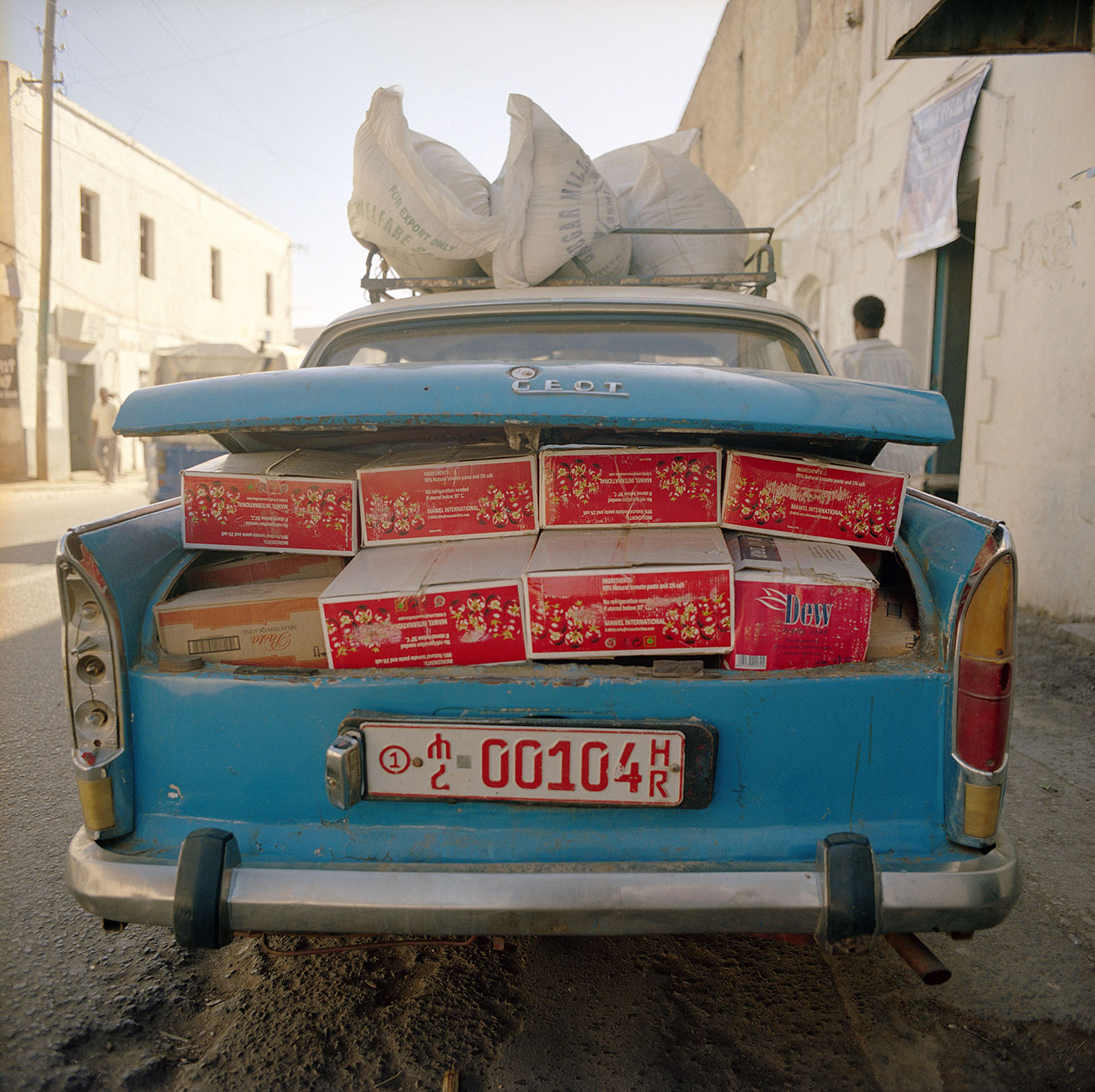Raymond Depardon
Such a sweet moment
|
From Wednesday 29 October 2014 to Monday 9 March 2015
Colour appeared in the work of Raymond Depardon from the very first images. He was at that time 16 years old. Since then, it has accompanied him through all the most important moments: his years spent discovering photography, the first travels through Africa, the great reportages, then, more recently, “un moment si doux” (Such a Sweet Moment) that gives this exhibition its title. The exhibition presents 137 colour photographs; 40 have been specially printed for the Mucem exhibition, 23 of which were taken in Marseilles. With colour as the guiding theme, it is an invitation to wander through the life of the artist, from the late 1950s to the present day.
About the photos taken in Marseilles by Raymond Depardon in May-June 2014 for the Mucem exhibition:
“Children were running between the tables. I sensed that I mustn’t move. Raymond had spotted a passerby on the square, a square of light framing her silhouette. He pretended to point his camera at me and he got the good photo. With his Rolleiflex he doesn't hide behind the camera, he looks down to frame the photo. He moves laterally, always at the same height. This technique is perhaps what gives this particular tenderness to his street photos.”
Extract of a text by Claude Nougaret for Méditerranée, Raymond Depardon (Éditions Xavier Barral, en coédition avec le Mucem, 2014)
Curator: Hervé Chandès, General Director of the Fondation Cartier pour l’art contemporain
Associate Curator: Jean-Roch Bouiller, curator, head of contemporary art at Mucem
Scenography: agence bGc
Co-production: Réunion des musées nationaux- Grand Palais, in collaboration with Magnum Photos
Exhibition itinerary
When things started to click

"I didn't know I was a colour photographer. And yet it was there. From the very first photographs." Raymond Depardon.
For Raymond Depardon, colour is linked to childhood. His first photographs were of his mother, the animals on his parents' farm, the red tractor, the kitchen tablecloth. He was not yet twenty when he “went up” to Paris and moved into the back room of a photographer's shop on Ile Saint-Louis, where he took a photograph of himself on his scooter.
He became a photo reporter, he photographed Edith Piaf, he was sent to Africa, he saw the world. Since then, colour has been the companion to his sense of curiosity about the world.
Reporter

In the 1970s and 1980s, Raymond Depardon worked for big agencies: Dalmas, Gamma, Magnum. He took colour photographs, thought in colour, questioning human beings and the right distance from reality. In Chile in 1971, in Beirut in 1978, Glasgow in 1980, he focussed not on events but what was happening around them, on the margins. These reportages laid the foundations for his future work.
Chile
In 1971, two years before the death of Salvador Allende, he photographed the Mapuche indigenous people who were fighting to live on their ancestors' lands. He observed the men working in the fields and thought about his father. He was 28 years old, wondering about his relationship to the world and to the subject; he was seeking a new path.
Beirut
In 1978, in Beirut on an assignment for the German magazine Stern, he turned away from reportage. He photographed not the civil war, but its consequences. Raymond Depardon stayed there for a month, photographing intensely in colour. His reportage was seen throughout the world.
Glasgow
In 1980 the Sunday Times asked him to go to Glasgow. For a photographer of the south and the desert, Glasgow seemed to be a world away from his work. Yet he discovered the northern light, remembering it later when he photographed the north of France. In Glasgow he asked himself questions as an anthropologist does: how to avoid exoticism? How much distance should he take? In large cities, Raymond Depardon felt like an inner exile; as a young man, he found it hard to adapt to Paris. His photographs of Glasgow were never published, but they foreshadowed his work on big cities that he exhibited at the Cartier Foundation for Contemporary Art in 2004.
Such a sweet moment

It was in the 2000s that colour reappeared in his work, becoming more dominant. It was no longer related to reportage, the press and news events but to a quest for a personal truth, the search for happiness, a place to live, a beginning. Depardon rediscovered the light and colour of Ethiopia, South America and the palm groves of Chad. For this project, he has specially returned to five counties (Ethiopia, Chad, Bolivia, Hawaii and the United States) in order to undertake a new set of photographs for the exhibition.
The exhibition at the Mucem is the opportunity for new images of Marseilles, and the revelation of a new Mediterranean element to his work.
Un moment si doux, Such a Sweet Time, reveals a quieter, more inward, intellectual approach. Raymond Depardon is now, to quote Clement Rosset, seeking “the sweetness of reality”.
About the photos taken in Marseilles by Raymond Depardon in May-June 2014 for the Mucem exhibition:
“Children were running between the tables. I sensed that I mustn’t move. Raymond had spotted a passerby on the square, a square of light framing her silhouette. He pretended to point his camera at me and he got the good photo. With his Rolleiflex he doesn't hide behind the camera, he looks down to frame the photo. He moves laterally, always at the same height. This technique is perhaps what gives this particular tenderness to his street photos.”
Extract of a text by Claude Nougaret for Méditerranée, Raymond Depardon (Éditions Xavier Barral, en coédition avec le Mucem, 2014)






